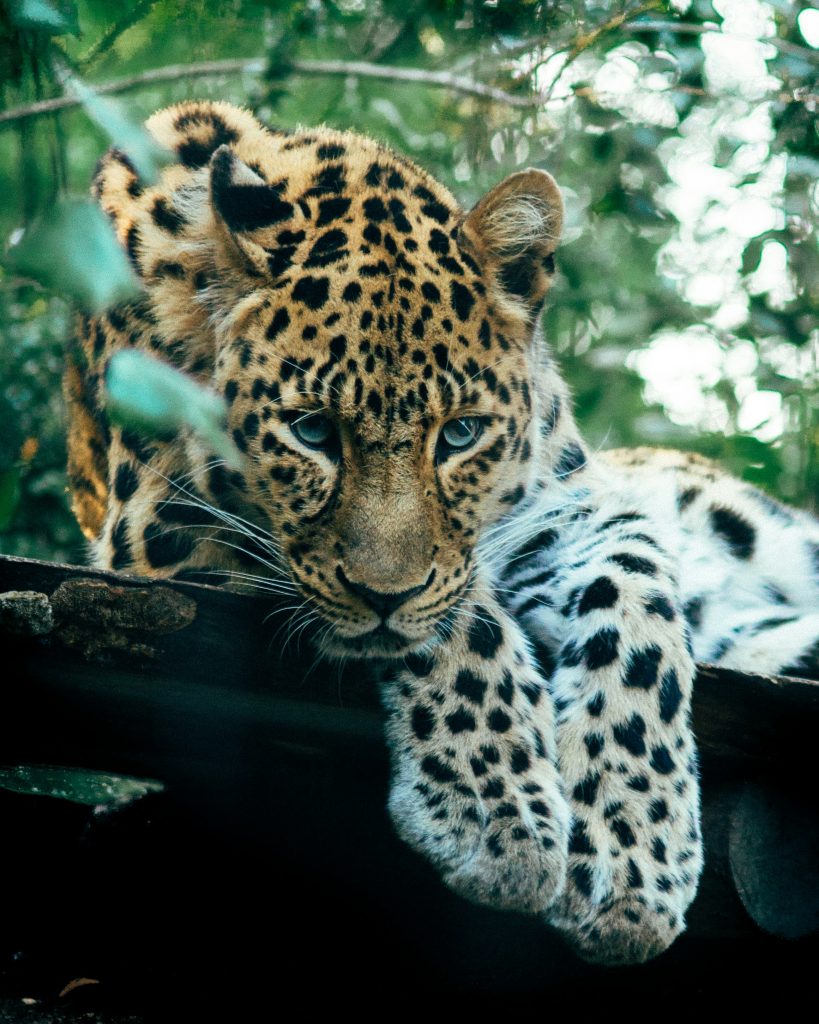
Welcome to Africa: a continent where the wildlife is wilder, the sunsets burn brighter, and the stories you’ll bring home are more magical. We’ve talked to local experts, listened to people who truly know the land, and compiled five wildlife experiences that will have you double-checking you’re not dreaming. Buckle in—it’s time for some epic encounters with Africa’s most magnificent creatures.
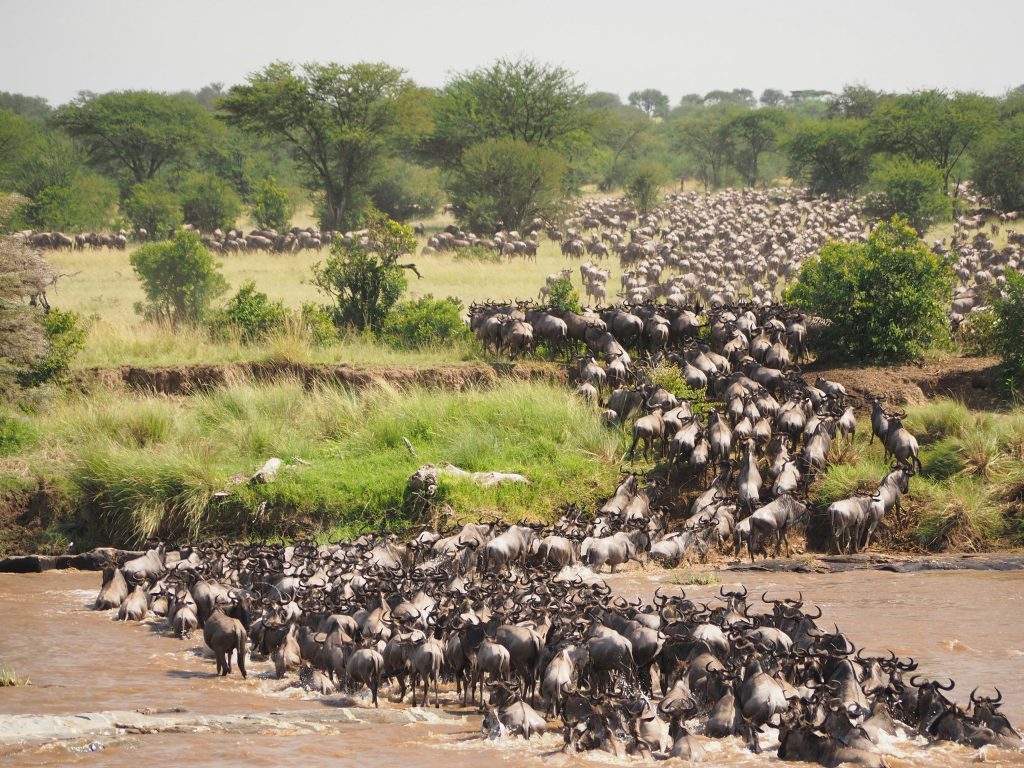
The Great Migration (Tanzania & Kenya)
Why It’s Mind-Blowing
Imagine standing in the Serengeti or the Maasai Mara as over a million wildebeest, zebras, and gazelles surge across the plains, their hooves pounding the earth like distant thunder. That’s the Great Migration: a massive, spectacular “eat-or-be-eaten” drama. Picture this: you’re watching from a safari vehicle (or even a hot-air balloon if you’re feeling extra fancy), and you see dust clouds swirl as these creatures move in droves, following the rains. Lions lurk at the edges, crocodiles linger at river crossings, and hyenas cackle in the distance. It’s basically nature’s biggest road trip.
We’ve heard Destination Experts call it “The Greatest Show on Earth.” And you know what? They aren’t lying.
When to Go
- June to September: This is high season for crossing the crocodile-infested Mara River in Tanzania and Kenya. If you want to see a real-life action flick, this is your window.
- October to December: The herds usually make their way back to the Serengeti. It’s less crowded and can be easier on your wallet.
Pro tip: Chat with local experts or your lodge in advance to see where the herds are. The Migration is constantly on the move, so a little planning goes a long way.
Local Insights
- Go Beyond the Crowds: Sure, you want to see the herds crossing the Mara River. But consider exploring adjacent conservancies or protected areas where community-based tourism projects are thriving. Places like the Mara Naboisho Conservancy in Kenya or the Loliondo area in Tanzania often offer a more intimate safari experience.
- Responsible Lodges: Look for lodges that practice responsible tourism by working with local Maasai or other indigenous groups, employing them as guides, and supporting local infrastructure.
If you want to geek out on migration patterns or learn more about wildlife conservation, check out the African Wildlife Foundation for more in-depth info.
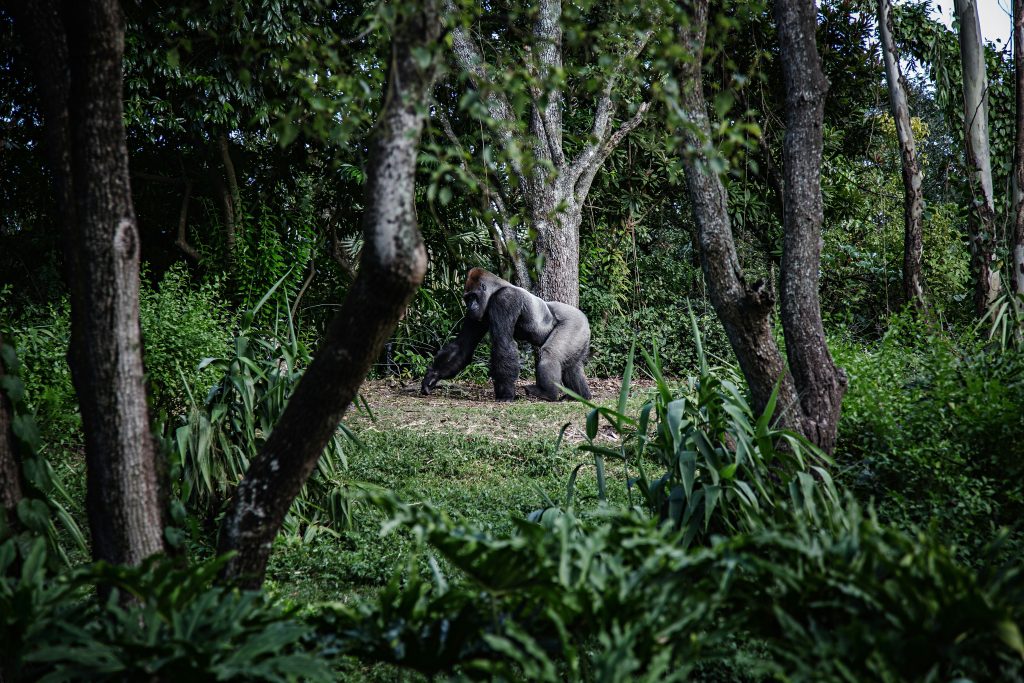
Gorilla Trekking (Uganda & Rwanda)
Why It’s Worth the Sweat
Few experiences rival the thrill of venturing into lush, misty forests to catch a glimpse of a magnificent mountain gorilla; if anything, the mud and humidity only heighten the sense of adventure. Once you lock eyes with these remarkable creatures in Bwindi Impenetrable Forest (Uganda) or Volcanoes National Park (Rwanda), every ache and bug bite seems to vanish. Gorilla trekking is a challenging, exhilarating,and ultimately life-changing journey.
These gentle giants share about 98% of our DNA so when a silverback gazes back at you with those deep, knowing eyes, it feels like looking into our own evolutionary past, highlighting our shared heritage. It’s a powerful experience that underscores the fragility and grandeur of these extraordinary animals—and the importance of preserving their place in the wild.
Responsible Travel & Community-Based Tourism
The beauty of gorilla trekking is that your permit fees often go straight back into conservation efforts and local community development, a prime example of community-based tourism. In Uganda and Rwanda, local communities are employed as guides, trackers, and porters, ensuring that tourism dollars are injected back into the areas that need it most. This is a huge deal for gorilla conservation, because without financial incentives for conservation, there wouldn’t be enough motivation to protect their habitats.
“Responsible” is the name of the game:
- Tour operators limit the number of tourists per gorilla family each day.
- They maintain a safe distance—about seven meters (though gorillas don’t always stick to the script).
- They also observe strict hygiene rules to avoid passing on human diseases to these vulnerable apes.
Practical Trekking Tips
- Permits: Book well in advance. Gorilla permits in Uganda can set you back about USD 700, while in Rwanda they’re about USD 1,500. Yes, that’s steep, but remember it’s fueling conservation and community projects.
- Fitness: The trek can be challenging—forest terrain isn’t exactly a paved sidewalk. Do some cardio prep, or at least skip the elevator for a few weeks before your trip.
- Gear: Pack sturdy boots, a rain jacket (it’s called a rainforest for a reason), and gaiters to protect against creepy crawlies. Bring a solid camera, but skip the flash—it freaks them out.
If you’re curious about ongoing projects in gorilla conservation, Dian Fossey Gorilla Fund has great resources and even volunteer opportunities you can support.

Gliding Through the Okavango Delta (Botswana)
Why the Delta is a Bucket-List Must
Now let’s talk about the Okavango Delta in Botswana—a vast network of winding waterways, lagoons, and floodplains that offers some of the most striking scenery in Africa. It’s home to thriving populations of elephants, hippos, lions, leopards, and an impressive array of bird species, making it a haven for wildlife enthusiasts.
What truly sets the Okavango Delta apart is its unique water system. Unlike most deltas, it doesn’t flow into the sea—instead, its waters fan out into the Kalahari Desert, forming a lush oasis in the heart of an otherwise arid region. It’s a remarkable example of nature’s ability to surprise and inspire.
How to Explore
- Mokoro Safari: This is the classic Delta experience. A mokoro is a dugout canoe that glides through lily-dotted waters, propelled by a local poler standing at the back. You’ll feel like you’re floating inside a painting, with the gentle swish of water, chirping of frogs, and the occasional snort of a distant hippo.
- Walking Safari: If you’re up for an adrenaline surge, consider a guided walking safari on one of the Delta’s many islands. You’ll literally be on foot while tracking elephants, giraffes, and zebras. Keep your eyes peeled, and always stay close to your guide.
- Game Drives: Many lodges in the private concessions surrounding the Delta offer day and night game drives. Nights are particularly thrilling because that’s when the big cats come out to play.
Delta Tips
- Moremi Game Reserve: Often described as the “predator capital of Africa,” Moremi is located in the eastern part of the Delta and is home to a high density of big cats.
- Okavango Panhandle: If fishing is your jam, head to the Panhandle. During peak fishing season, you can reel in huge tigerfish while enjoying the epic scenery.
Look for lodges that partner with community-based tourism initiatives. Some even sponsor local schools or healthcare clinics. For additional Botswana travel tips, check out Botswana Tourism Organization.
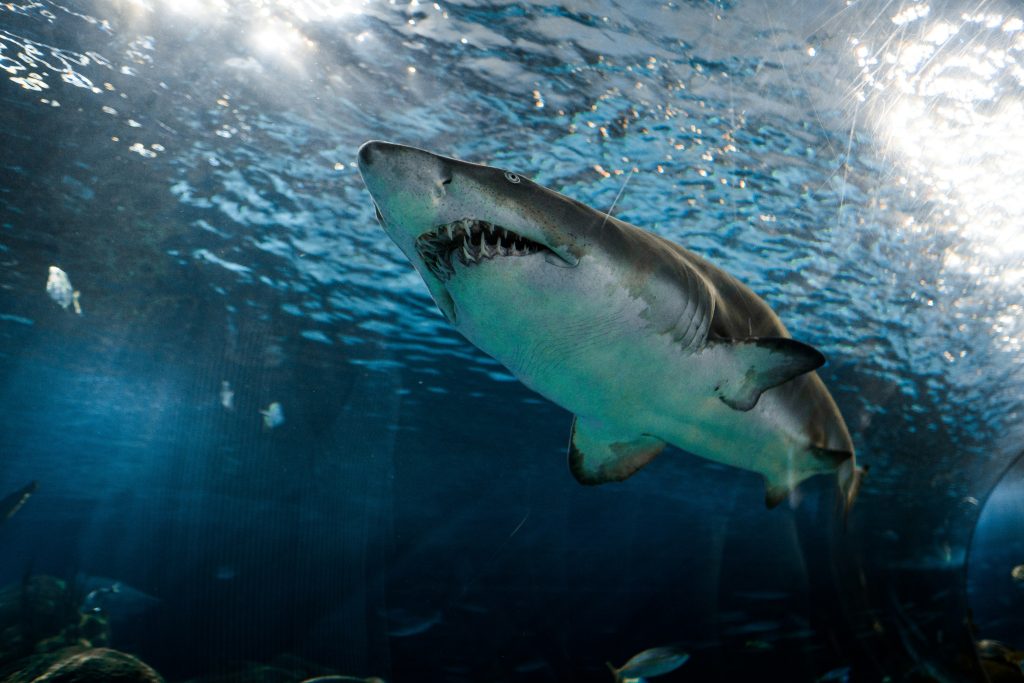
Shark Cage Diving (South Africa)
Face-to-Fin Thrills
So you’ve done your fair share of safari game drives, and you want a wildlife adventure with a side of adrenaline that’ll make you question your sanity? Enter shark cage diving in South Africa. Specifically, in places like Gansbaai (a.k.a. the Great White Shark capital of the world) or Mossel Bay.
You climb into a metal cage that’s lowered into the ocean, and Great Whites—or other shark species, depending on the season—cruise by, giving you the side-eye. Let’s be honest, there’s no filter or angle that’s going to make them look less intimidating. But ironically, it’s when you see them up close that you realize they’re not mindless killing machines, but fascinating, misunderstood predators vital to ocean ecosystems.
Responsible Shark Encounters
Shark cage diving has its controversies, particularly around baiting. The good news? Ethical operators exist, ones that prioritize safety for both guests and sharks while adhering to conservation guidelines. Make sure you choose a licensed operator who follows responsible practices—like not over-chumming the water.
Why does responsible cage diving matter? Because sharks are threatened by overfishing, finning, and negative stereotypes. By supporting responsible tourism, you’re helping fund research and conservation. A portion of the fees from some operators goes to marine research on shark populations. That’s a huge plus.
Hidden Gems Near the Dive Sites
- Hermanus: If you’re in Gansbaai, you’re also near Hermanus—famous for some of the world’s best land-based whale watching (between June and December).
- Walker Bay Nature Reserve: If you need to calm your nerves post-dive, head to this coastal reserve for serene beach walks and maybe spot some seals or dolphins.
For an additional resource on marine conservation in South Africa, head to the official site of Shark Spotters—a program that monitors shark activity and promotes public safety and research in Cape Town.
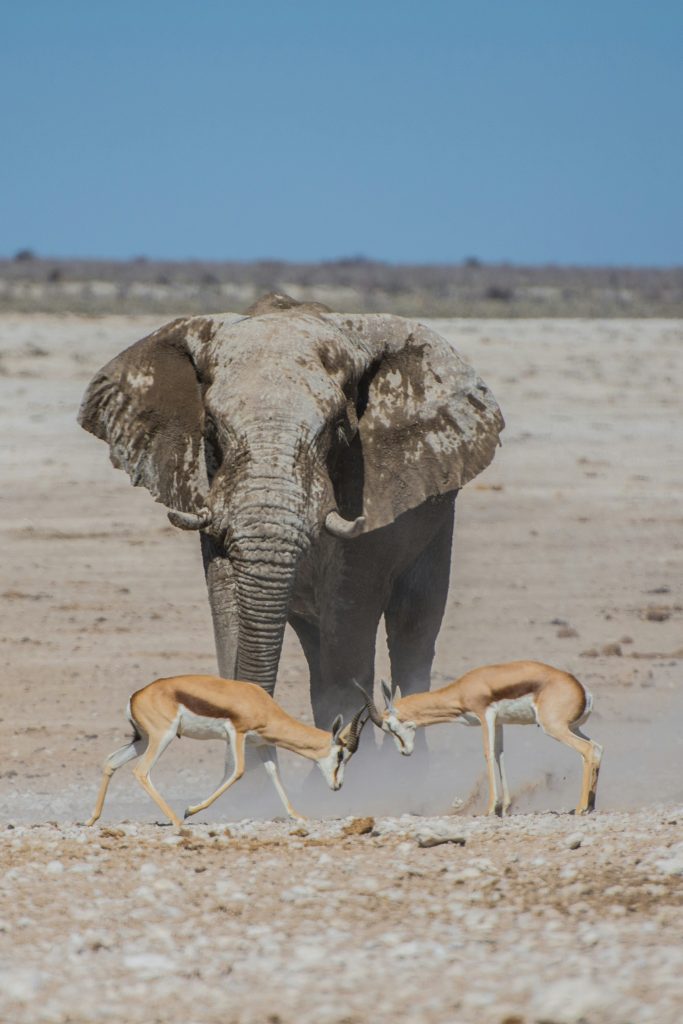
Tracking Desert Elephants (Namibia)
The Magic of Desert Adaptation
If you think elephants only live in lush savannahs, Namibia’s desert-adapted elephants disagree. These massive creatures roam the rugged landscapes of Damaraland and Kaokoland, surviving on minimal water and scarce vegetation. It’s like seeing an elephant on Mars!
Their legs are long and their feet are broader—physical adaptations to navigate dunes and rocky terrain. They’ve also got some interesting social behaviors suited to the desert environment. Watching them trek across the barren plains in search of water is an unforgettable sight, a testament to the resilience of wildlife in Africa’s harshest habitats.
Local Expert Guides & Community Projects
Namibia is a pioneer in community-based tourism. There are multiple conservancies across the country run by local communities who partner with safari operators to protect wildlife and share tourism revenue. This approach is a win-win:
- It creates incentives to protect the animals (like these desert elephants).
- It ensures communities benefit directly from tourism income.
So when you sign up to track these elephants with a reputable outfitter, chances are you’re also supporting local jobs in guiding, hospitality, and conservation. Namibia has some of the best success stories in Africa when it comes to community-based conservancies—heck, they basically wrote the rulebook on how to do it right.
Travel Tips to Keep in Mind
- Best Time to Visit: Namibia is mostly arid, so aim for the dry winter months (May to October) when wildlife congregates around water sources, making it easier to track desert elephants.
- 4×4 Adventures: The terrain is rough. Opt for a 4×4 vehicle or join a guided tour. You don’t want to get stuck in the middle of nowhere with no phone signal and a sense of direction that’s basically “lost.”
- Be Water-Wise: This is a desert region. Respect water usage. It’s a precious resource for both people and wildlife.
To learn more about Namibia’s world-leading community-based tourism model, check out Namibia Tourism Board for insider details and travel resources.
Final Roars: Responsible Travel & Beyond
After you’ve ticked off these five epic African wildlife experiences, you’ll probably be left wondering: “What next?” Because let’s be honest, once you’ve watched lions stalk their prey on the Serengeti, locked eyes with a silverback gorilla, or stared into the jaws of a great white shark, normal life can feel like the color beige. The good news is Africa’s got a bunch more hidden gems we haven’t even mentioned—like exploring the Simien Mountains in Ethiopia or snorkeling with whale sharks in Mozambique. But that’s a story for another day.
Why Responsible Travel Matters
In our (mostly) humble opinion, the most crucial takeaway here is that your tourism money has real power. Africa’s wildlife faces threats from poaching, habitat loss, and climate change. Community-based tourism provides local communities with direct incentives to protect these incredible creatures. When you opt for lodges, guides, and tour operators that invest in local communities—providing education, healthcare, and job opportunities—you’re helping to create a future where wildlife and humans can thrive together.
Yeah, it might cost a bit more than a budget backpacker trip to a beach in Southeast Asia, but the payoff is huge. You’ll walk away with memories that don’t just fade into a digital photo album: they live on in local economies, conservation efforts, and the global push to keep these wild spaces wild.
Keep It Real, Keep It Fun
We get it—responsible travel can sometimes sound like that lecture your teacher gave you about recycling. But it doesn’t have to be preachy or boring. You’re still out there chasing once-in-a-lifetime wildlife moments, feeling the rush of nature in its rawest form. The difference is, you’re also leaving a positive impact instead of just footprints and an empty soda can (please, for the love of everything holy, keep your trash to yourself).
So go ahead—swap stories around the campfire with new friends, marvel at the nighttime roar of lions, or wake up to the sunrise over the Delta. Just remember to tip your local guides well, ask questions about where your money is going, and share your experiences online so more people can discover the joys (and responsibilities) of traveling in Africa.
Where to Next?
Ready to plan your next big escapade? Our crew at CercaTravel.com is here to dish out more travel tips and hidden gems from across the globe. We’re not your standard marketing machine; we’re real travelers who want to connect you to people who know the destinations intimately. Because at the end of the day, the best journeys happen when you combine a sense of adventure with the wisdom of local experts. That’s how you find the truly off-the-beaten-path spots and create the best kind of stories—the ones that’ll last a lifetime.
Remember, Africa is massive. We’ve only scratched the surface with these five wildlife experiences. There’s so much more to discover. Whether you’re stalking big cats in Zambia’s South Luangwa, riding a camel through the deserts of Northern Kenya, or snapping shots of flamingos in Tanzania’s Lake Natron, the continent brims with natural wonders that will definitely make you question your decision to ever live in a concrete jungle.
Now, go forth and roam, friend! Your next African adventure awaits.